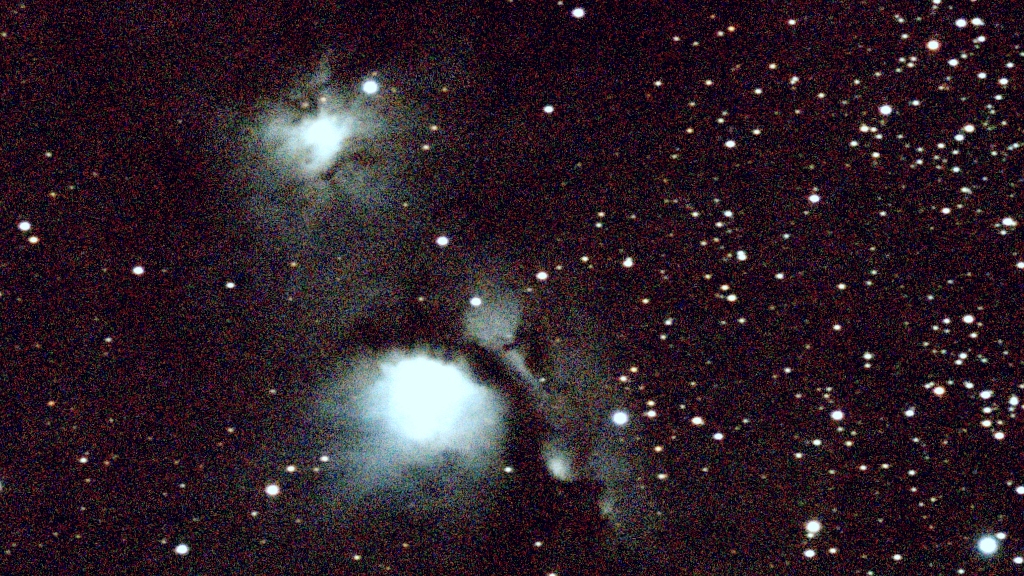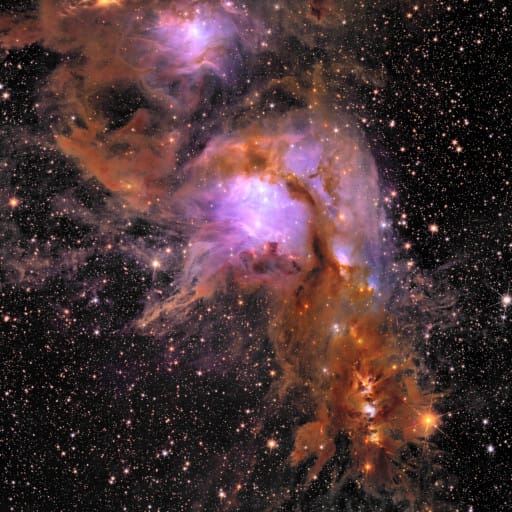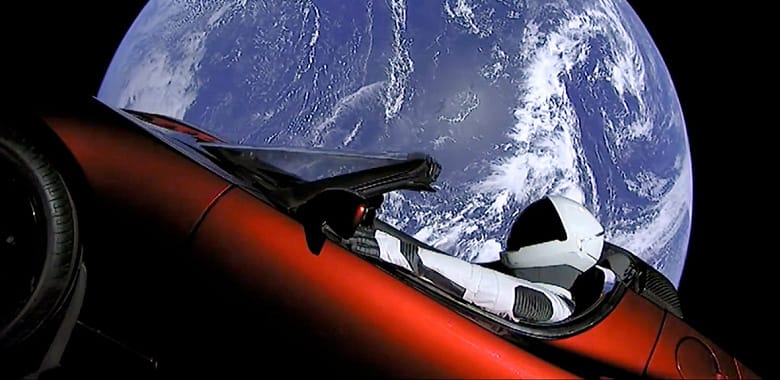A Billion Years

It is easy to picture our galaxy as just a bunch of static stuff. Where most of us live the night sky is a mild gray luminescence, polluted by urban light. Maybe the moon is out, behaving like the moon always does, in the same old, same old. There might even be 3 or 4 “stars” visible. More likely one or two of the planets Jupiter or Venus, and 1 or 2 stars, like Sirius or Vega. Stars? Are you Sirius? And those are all the same old, same old, as well. Rising, transiting, and setting in predictable patterns every night. Year after year. Decade after decade. So that’s it then.
For most of us, we’ve lost touch with the stars.
In reality, our celestial skies are anything but static. Asteroids, meteorites, and comets all come and go through our solar system frequently. It is busy out there.
Recently, a Turkish amateur astronomer discovered an unusual, and potentially important, object in our solar system. He had written computer software designed to crunch the database of observations archived at the Minor Planet Center (MPC). The goal was to find previously unidentified asteroids. MPC is the official repository of near earth observations and I’ve written about it before in the context of comet Tsuchinshan-ATLAS A3.
Well, his program worked, and it found several candidates for near-earth objects (NEOs). One of them was particularly interesting. Using multiple sightings, this NEO was predicted to orbit the Sun, intersecting the orbits of both Mars and Earth. That ruled out the possibility that it was some old artificial satellite junk, which would be orbiting the Earth, not the Sun. In short, this was a potential new NEO of some consequence.
The data analysis was reported to the MPC, where it was checked and verified, and on January 2, 2025, this new NEO was christened “2018 CN41” in a Minor Planet Electronic Circular 2025-A38 posted for the community of astronomers.
2018 CN41. Great! Just one more thing we best keep in the rearview mirror.
But it’s more than just comets and asteroids animating our galaxy. Stars are born all the time; perhaps three new stars switch on every year.
Where does that happen?
How does that happen?
With winter hard upon us, and the constellation Orion high up overhead, Max and I decided to go visit one of the nurseries where stars are born.
No, not Hollywood. The reflection nebula M78.
M78?
Exactly! One of the ‘Not-a-Comet” objects Messier cataloged as #78 on his “Do-Not-Call” list.
It was a good time to get away and explore the Galaxy. Events here on Earth seemed to be going from bad to worse. All communications from US government health agencies were blocked by Executive Order. Ongoing NIH meetings to evaluate scientific proposals were halted in mid-session. Grants, funds, and payments were frozen until further notice. Patients in clinical trials were at risk.
Elon Musk’s minions took over control of the computers in the Office of Personal Management, databases holding sensitive personal and financial records for millions of citizens. Then they blocked the Office’s professional staff and administrators from accessing the systems.
Government websites and databases were vanishing, as if in solidarity with the Disappeared of Northern Ireland.
President Ronald Reagan’s 1981 firing of 11,359 striking air traffic controllers apparently returned home on January 29, killing 67 passengers in a crash at Reagan International Airport. Just the day before President Trump dissolved an air safety commission, and offered air traffic controllers a buyout of 8 months’ pay if they resigned and left the government. He blamed the crash on diversity hiring policies.
January’s weather had been dreary for almost the entire month, matching the prevailing civic winds. But miraculously, late in the month, the snow and rain stopped, the moon was new, and skies were clear. Max and I hauled our gear out of moth balls, and headed out to our launch site, the last snow crunching under foot.
First we did the usual telescope tweaking in preparation for departure, like aligning the telescope with the North Star, calibrating so that the stars the telescope thought it saw, and the stars the telescope actually saw, were one and the same. We set the heat on the dewshield to keep condensation off the optics. Details, details.
“Bring up the EKOS control console, Max”
“There it is.”
Finally we were ready.
"Go to M78!"
“Check!”
And not a moment too soon, either. An international trade war was slated to start the following Saturday.
So, where do stars come from anyway?
Well, bread is baked where the flour is, and the same for stars: stars are born where the stardust is. And one of the best places to look is in the constellation Orion, which hosts a massive molecular cloud complex largely made up of hydrogen gas. And dust. Stardust.
The most famous resort for birthing stars is Orion's namesake, the Orion Nebula, which is M42 in Messier-speak. It is located in the string of stars comprising Orion's sword hanging down from his belt. The gases in M42 are so close to very hot stars that the molecules ionize and radiate light all on their own, an "emission" nebula. It's beautiful, and Max and I will head there one of these days soon.
But tonight we are headed for M78, which is located further up the asterism along Orion's left side, as we view the constellation; or what Orion would think of as his right side if we imagine him facing us. Here there aren't any super hot stars close enough to ionize the hydrogen gas, and therefore no light is emitted by the nebula. Instead, the clouds of gas and dust are lit up by reflected starlight, like the light of a movie projector reflected off the screen at a drive-in theater. M78 is a "reflection" nebula.
Max and I worked for several hours imaging M78, resulting in the banner image posted up top. Each of the bright, blue-white cloud areas in that image is being illuminated by the light of a young star, and you will notice that in between the reflections, and crossing them, are very dark black bands. At first, these dark areas appear to be empty spaces opening windows through the nebula, deep into a starless infinity.
"That's what they look like to me," said Max.
Nope. Those are filaments of condensed dust blocking starlight from our view; we are seeing the shadows cast by the filaments.
"Are you sure?"
"Yes, Max."
Our little space ship telescope can only detect light in the visible wavelengths, roughly what our eyes see as blue through red. But the dust only emits light in the infrared, much longer wavelengths, so we can't see it with our telescope.
"Is there a telescope that can?"
You bet. The Euclid space telescope, launched by the European Space Agency, carries cameras that can record infrared light. Here is an image of M78 taken by Euclid and released last year. Behold the dust!"

The image links to more information on the ESA website.
"Wow! And that's the stuff of stars?"
Yup. As the dust filaments fragment, and collapse under their own gravity, they get very dense, and very hot. Once one becomes dense enough, and hot enough, it ignites. Hydrogen molecules fuse to form helium, releasing massive amounts of energy, and a star is born. It can take tens of millions of years.
To be honest, Maxie and I were a little disappointed in our M78 visit. And that gorgeous Euclid image didn't help, even though we knew it was an unfair comparison. Our space ship suffered turbulence on the trip, and so on more than half the exposures the stars were captured as streaks instead of points. Those frames had to be discarded. Consequently, the image is grainier than I would like. Very sad. Still and all, not a bad first visit. And we get to go back.
But we weren't half as disappointed as the Hungarian amateur astronomer who discovered NEO 2018 CN41.
Near-earth object 2018 CN41 was, sadly, short-lived.
When the plotted orbit of 2018 CN41 went up on the MPC website, the contributing astronomer realized that it looked suspiciously like the path taken by NASA’s Mars probes. Just a very bad one that overshot the Martians and sailed off to orbit the Sun instead. He checked against the databases of interplanetary missions but came up empty. Nothing matched.
Still not entirely comfortable with the situation, he queried colleagues on the MPC mailing list. Sure enough, 2018 CN41 was not a new NEO after all. It was actually a used 2010 Tesla Roadster approaching 3.5 billion miles on the odometer.
On January 3, the MPC released Electronic Circular 2025-A49 deleting poor 2018 CN41.
The designation 2018 CN41, announced in MPEC 2025-A38 on Jan 2, 2025 UT, is being deleted. The object was reported throught the identifications pipeline as a 3-nighter linkage found in the isolated tracklet file and more tracklets were linked in the ITF, leading to a small object on a heliocentric NEO orbit. The next day it was pointed out the orbit matches an artificial object 2018-017A, Falcon Heavy Upper stage with the Tesla roadster. The designation 2018 CN41 is being deleted and will be listed as omitted.
“Man! That’s a bummer!” said Max.

Last week we passed the 7th anniversary of Musk’s stunt. SpaceX was testing its new Falcon Heavy rocket, and they needed a simulated payload to prove it could carry something, well, something “heavy”, as far as Mars. So on February 6, 2018, it blasted off with Musk’s personal “midnight cherry” red Tesla Roadster permanently bolted to the upper stage. Complete with a suited-up mannequin, “Starman”, sitting behind the wheel. Complete with David Bowie’s “Space Oddity” playing in a loop on the radio. Complete with souvenirs in the glove box.
Lights! Camera! Action!
The escape trajectory of the upper stage overshot Mars by a generous margin, which is why the orbit of 2018 CN41 didn’t look quite normal for an interplanetary probe. It wasn’t one. Instead, it settled into an orbit around the Sun.
Musk claimed it would wander the Universe for a billion years.
Deep space objects are unregulated. If you are a billionaire who can afford to blast your dining room table to Saturn, there’s nothing requiring you to record or log the place setting. That’s problematic and you can read more here.
“Oh shit!”
“What’s the matter Max?”
We had just come out of the worm hole and were back within our own solar system, nearly back to Earth, to the Blue Ridge, to home.
“I think it’s the Space Force cops,” said Max.
I looked out the portal and, sure enough, flashing lights were coming our way. That was unexpected. We’d updated our EZPass transponders for the tolls through the wormholes. They can’t get us for that. We weren’t even going the speed of light anymore; I didn’t feel heavy enough for that.
“What are you doing?”
“Making a run for it!”
“Max! Cut it out! Slow down. We’ll just find out what they want.”
“Tell that to Leonardo,” Max groused, but he slowed down. And we waited for the Space Force ship to come alongside.
But as it approached we realized that it wasn’t the Space Force cops after all. It was just a bundle of junk tumbling head over heels, cartwheeling through the universe. As it flipped around, taking about 4 to 5 minutes each cycle, sunlight reflected off its surface creating the flashing lights that first caught our attention. It was pretty weird looking. Spooky, actually. Like some Rube Goldberg mess of struts and framing, welded onto an empty 200 gal oil drum.
“Heavens to Murgatroyd!”
Max could channel popular culture from any century, at any time. It was disconcerting until you got used to it.
“What is it, Max?”
“That’s the freakin’ Tesla Roadster!”
And so it was. What was left of it.
The cherry red shell was mottled black and gray, flaked, split, and missing entirely in some places. The tires were gone. They might have blown out immediately after launch, but in any case the extreme radiation in space had rotted them away. There were cracks in what was left of the windshield, probably from the impacts of small rocky meteorites. All the leather and plastic components were long gone.
Starman was well and truly dead.
First, he threw up from the continuous uncontrolled tumbling. Then he died. Returned to ashes. To dust. His suit was thinned fibers, tattered and torn, hanging flat on the seat frame. The famous helmet floated weirdly in a wheel well, trapped by the force of the flipping car frame. Barely recognizable. His left hand had detached from the driver side door frame and the extended arm was now floating straight out at a 45-degree angle.
“Uhmm, probably just an unusually awkward gesture,” muttered Max.
I glanced over to see if he was serious. No. And we both suppressed macabre laughter.
“He said Starman would cruise the Universe for a billion years,” I said.
“A billion years, my ass,” returned Max.
The vision was uncomfortable. Why would anyone do that? Who would treat a token of humanity to such devastating indignity? Simply as a twisted, silly joke. Who would send a toy out into space for a billion years, as if serious, with 4 hours worth of battery to loop David Bowie. For nothing. As a castoff stand-in for imagined commercial payloads that might make money someday?
Who could have such little regard for humanity? As if we were all just one big Saturday Night Live cold open. Who thinks risking their future in colonizing Mars – with such a person in charge – who thinks that makes any sense at all? And what if a fake Starman’s beaten up Tesla does cross paths with real Starmen in some future million years. If they recognize the wreck at all, what will they make of us? To do that.
What will they make of us?
An inconsequential non-serious bygone? To be pitied, perhaps?
What do we make of us?
We returned home in the early morning twilight, before the Sun was up. A low ground fog lay across the field. The telescope had parked itself and retreated to its home position. Max was gone, as usual in the end. Nothing now but to pack up the gear and head indoors for coffee.
No, the Universe is far from static.
We’d been to the birthplace of stars. Deliveries taking millions and millions of years, across scales of immeasurable size, involving forces with inconceivable power. Mass and energy being neither created nor destroyed, but transformed, molded, collapsed into the stars that will light the nebulae of the future.
But we’d also faced off with a vision of decay. The death of humanity in less than seven short years. An ignorant indifference to the meaning of being.
That’s what happens when you lose touch with the stars.
Max was gone. But I heard his voice echoing through the wormhole.
“A billion years, my ass.”